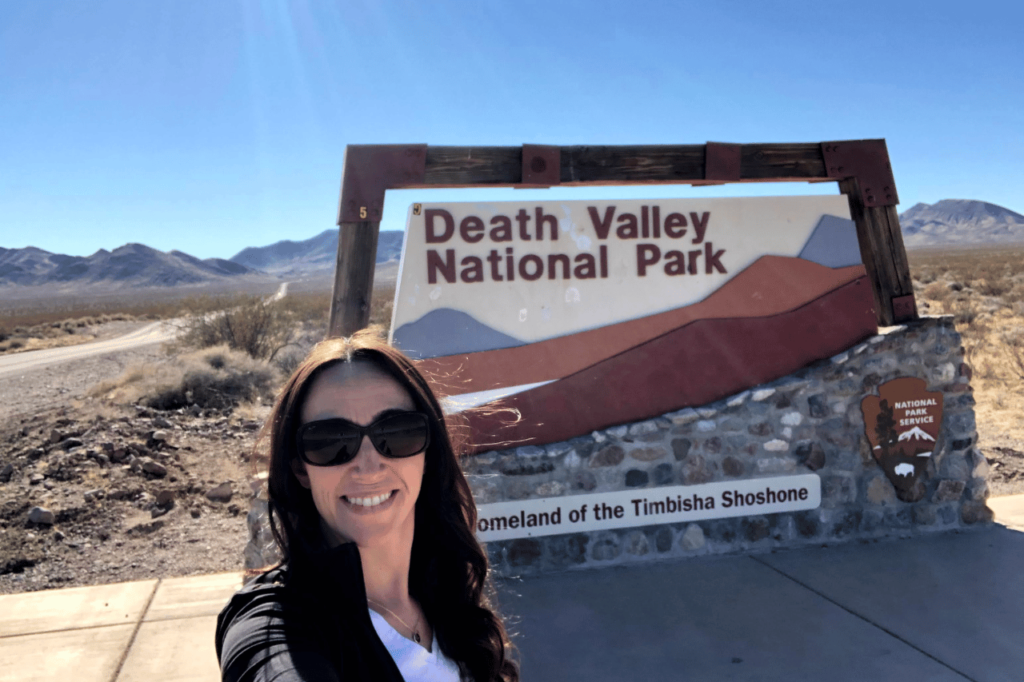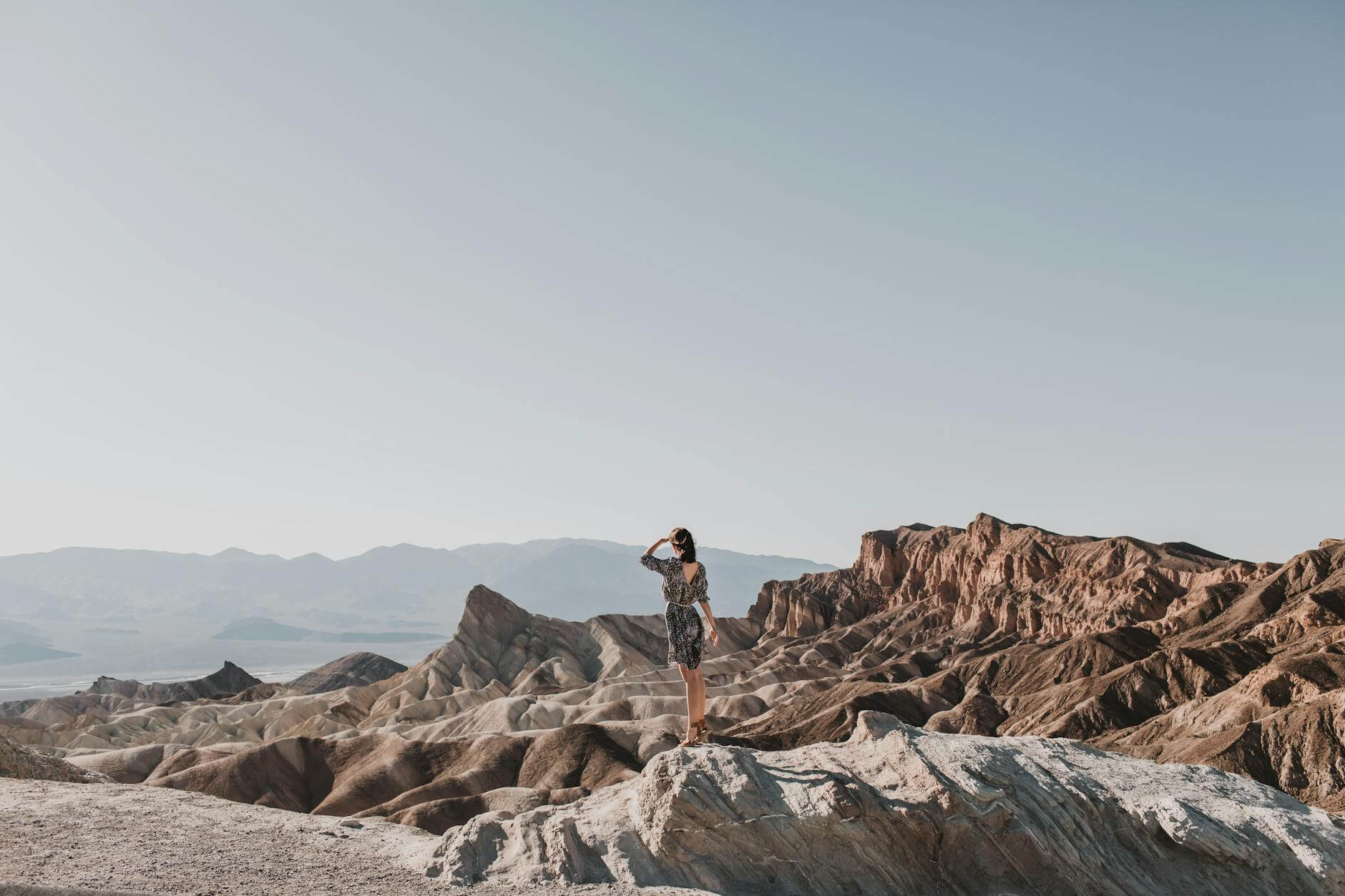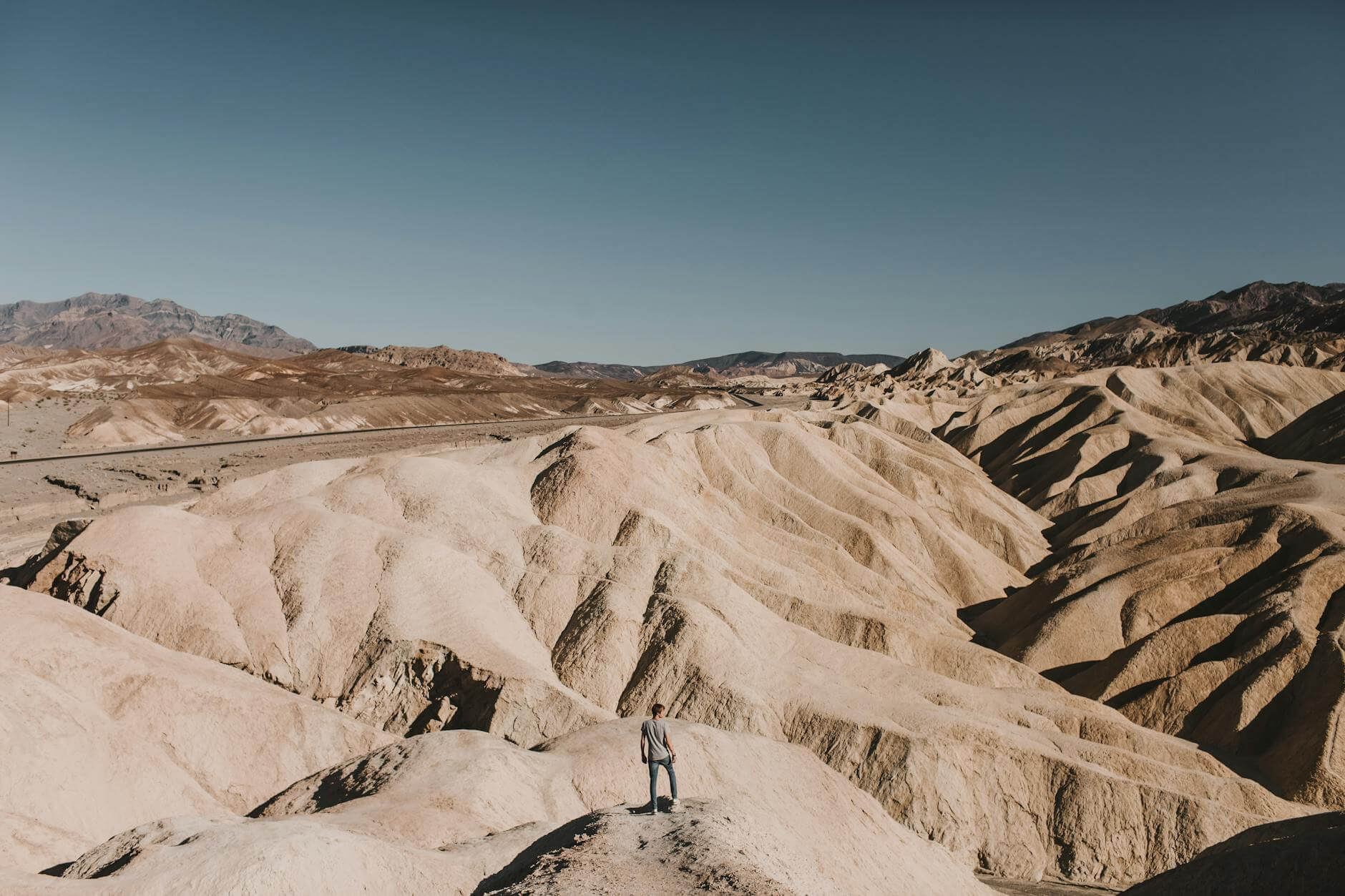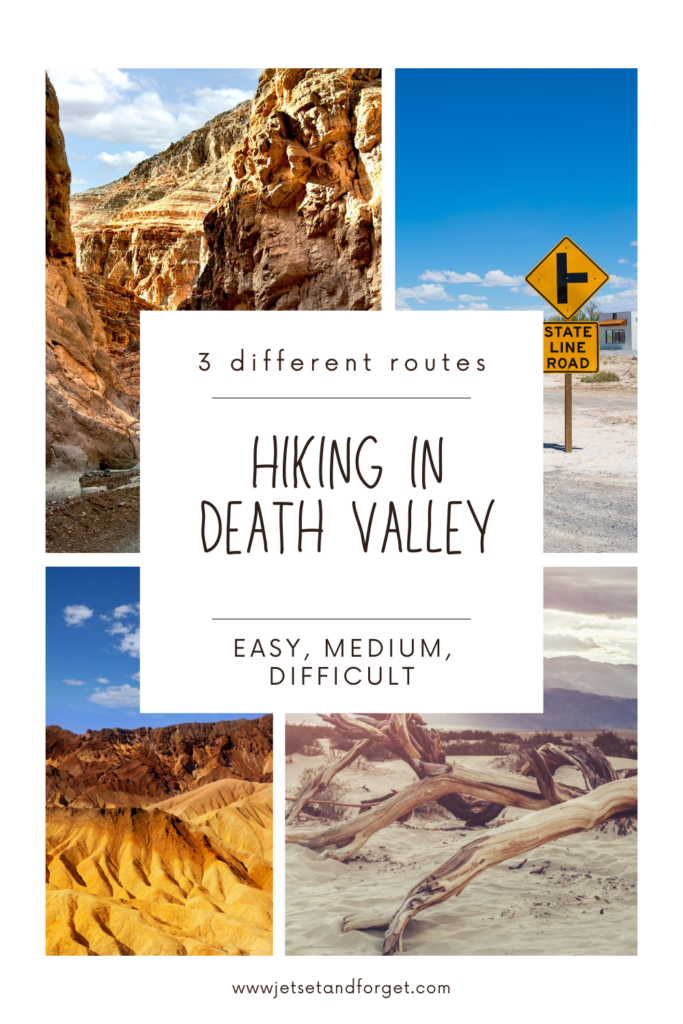Have you considered hiking in Death Valley? Nestled in the southwestern region of California and spilling into a fraction of Nevada, Death Valley stands as the epitome of arid magnificence, renowned as the hottest and driest expanse across the United States.
Within its vast confines lie hiking opportunities tailored to diverse physical abilities. Here are three options for all levels!

Death Valley can be as intimidating as its name suggests, where the barren, desolate rise and fall of immense canyons, stark mountains, and desert dunes stretch further than the horizons and threaten to squander any signs of life in the blistering heat.
While caution must be taken here, this national park is an incredibly endearing wilderness that draws millions of adventurers each year to discover its hidden oases, panoramic views, and endemic wildlife.
If you’re an adventure explorer looking for somewhere new to hike, the trails of Death Valley offer the awe of America’s lowest, hottest, and largest natural wonder.
Here are three hiking routes in Death Valley you won’t want to miss:
Easy Hiking in Death Valley:
Badwater Salt Flats
Badwater is the lowest point not only in Death Valley but in all of America. It’s a deep basin formed from salt flats that span an area of around 200 square miles, left behind by an immense inland lake that evaporated tens of thousands of years ago.
Sunken to a record-breaking 282 ft below sea level, this white wasteland is surrounded by soaring peaks of the black mountains and offers an easy hike. Plus, you’ll experience the dramatic phenomenon of Telescope Peak rising over two miles above you to the west.
It is imperative to follow local safety advice when venturing to Badwater, as the gigantic bowl traps heat and is dangerous to enter after 10 am in the summer months.
Even though the typical hike is a short two-mile trek to the edge of the flat and back, you should still take plenty of water and sunscreen with you to protect yourself against this arid, yet stunning, landscape.

Moderate Hiking in Death Valley:
Darwin Falls
A stark contrast from the neverending stoney vistas of the eastern parts of the valley, Darwin Falls is a spring-fed, 18 ft natural waterfall that breathes life back into the land and offers a welcome oasis from the harshness of the rest of the park.
Located near Panamint Springs, there’s a 2-mile round trip at moderate difficulty to reach the falls. To start with, the trail is flat and barren, but as you head deeper into the canyon, you’ll begin to see green plant life and dragonflies.
With thick vegetation, stream crossings and the buzz of wildlife, the idyllic Darwin Falls is a must-see for any hiker exploring Death Valley.
Bear in mind that the trail is largely unmarked, so be sure to have a good hiking route app with you to ensure you don’t get lost. There’s also no shade until you reach the falls, so be sure to pack for the heat, even in the cooler seasons.
A good rule of thumb for any hike is to take twice as much water as you think you’ll need – but especially when hiking in Death Valley!

Difficult Hiking in Death Valley:
Grotto Canyon
If you have extensive hiking and bouldering experience and looking for a challenge, Grotto Canyon is the place for you. Next door to the more popular Mosaic Canyon, this rare trail comprises several tricky obstacles to keep you on your toes. It includes an 8 ft high chimney to scale and multiple steep vertical climbs.
With levels of smooth, flat rocks, there’s the opportunity for technical canyoneering – though these sections can be bypassed if necessary. Between the natural challenges, the canyon path widens and offers reprieve with brief flat intervals.
If you’re going to attempt this adventure, consider your fitness levels and experience with scrambling first. Be sure to practice the rules of ‘Leave No Trace’ and be careful to protect the landscape you’re exploring.
The most important rule when exploring any area of Death Valley is to be mindful of the temperature. Daytime over Grotto Canyon can often exceed 120 F, so only head out at dawn or dusk.
Final Thoughts
Whichever path you choose to take in Death Valley, you’re promised an experience like no other. This vast, ancient natural marvel is a wonder to behold and offers a selection of hiking routes for explorers of all capabilities.
Despite its somewhat uninviting name, there are plenty of amenities in the area and a good selection of campsites and lodge rooms to make your trip comfortable.
FAQ for Hiking in Death Valley
Yes, but it’s vital to prepare with ample water, sun protection, and knowledge of the terrain.
Yes! There are easy trails to follow, use an all like All Trails to find which one is right for you.
Check out Golden Canyon or Badwater Basin; they offer stunning views without extreme difficulty.
Wear lightweight, breathable clothing, a wide-brimmed hat, sunglasses, and sturdy hiking boots.
Keep an eye out for snakes, scorpions, and other desert critters, but they’re usually shy and avoid humans.
Stay calm, conserve water, and stay put if possible. Use a whistle or mirror to signal for help.
Check out the National Parks site for different types of camping and the best campground in Death Valley.
